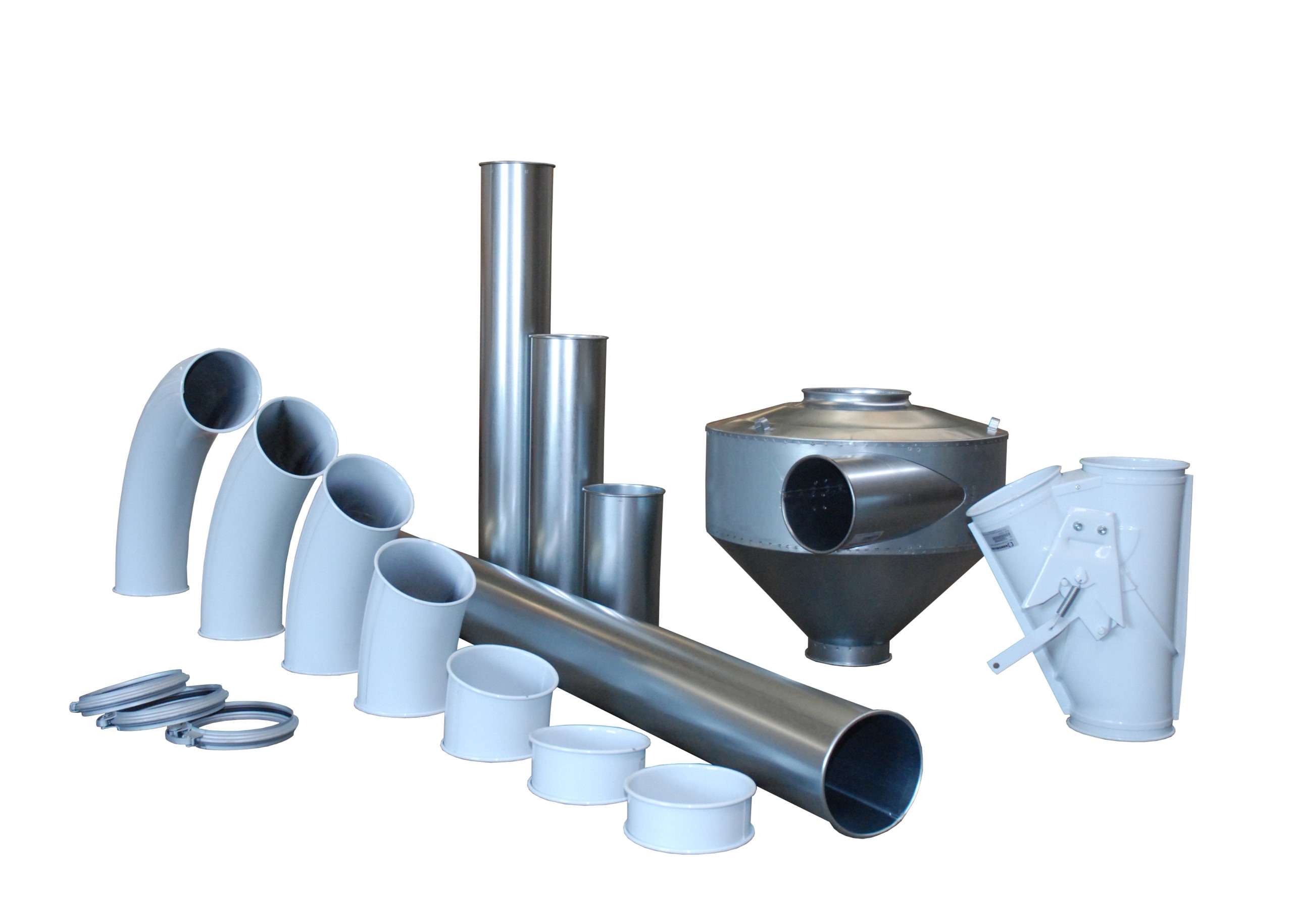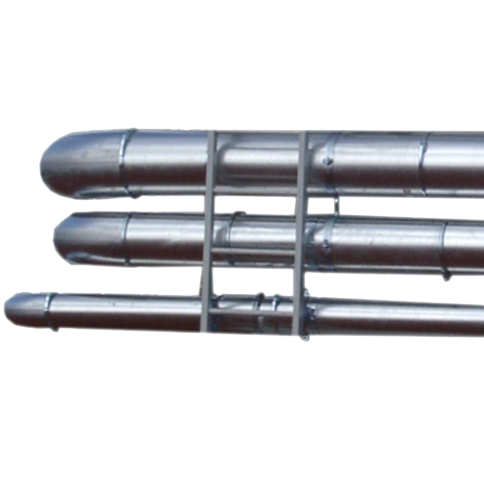

Conveying Pipes
Kongskilde pneumatic conveying pipes are essential components in the efficient and safe transport of materials within many agricultural settings. Using a pneumatic conveying pipe system allows for the quick and clean movement of bulk materials, minimizing grain loss and contamination.
What is a Pneumatic Conveying Pipe and How Does It Work?
A pneumatic conveying pipe is a specialized pipeline used to transport bulk materials using air pressure or vacuum. This method is highly efficient for moving grains and other bulk materials through enclosed systems, minimizing exposure to the external environment and reducing contamination.
Pneumatic conveying pipes are designed to handle a variety of materials with ease, providing a clean and safe method for transporting sensitive materials, such as grain. This system is particularly advantageous in industries where cleanliness and efficiency are paramount.
Flexible Pneumatic Conveying Pipe Systems for Grain Conveying
Kongskilde’s pneumatic conveying pipes are ideal for grain transport. The simple and flexible conveyance pipes can be adjusted to suit any specific purpose, resulting in shorter conveying distances.
When it comes to moving grain, the quality of your pneumatic conveying pipe can make or break your system. Kongskilde’s flexible range of conveyance pipes allows us to adapt to any application or setting, even where space is limited.
FAQ: Pneumatic Conveying Systems
What is a pneumatic conveying pipe?
A pneumatic conveying pipe is a specialized tube used to transport bulk materials, such as grains, through a pressurized air stream. This type of conveyance pipe provides a secure and efficient method for moving materials from one point to another within various environments.
How do pneumatic conveying pipes differ from other types of conveyance pipes?
Pneumatic conveying pipes are designed to handle grain in a way that minimizes product loss and contamination by utilizing air pressure or vacuum. Unlike mechanical conveyance pipes, which rely on physical systems like belts or screws, pneumatic pipes transport materials through enclosed tubes, reducing exposure to the environment and enhancing safety.
What are the main advantages of using pneumatic conveying pipes?
The main advantages of using pneumatic conveying pipes include reduced risk of contamination and grain loss, improved safety due to enclosed transport, and versatility in terms of installation. These pipes can easily be configured to fit complex layouts and are suitable for sensitive materials.
Contact us to start the conversation today.
Questions? Contact us, or find a dealer near you.

